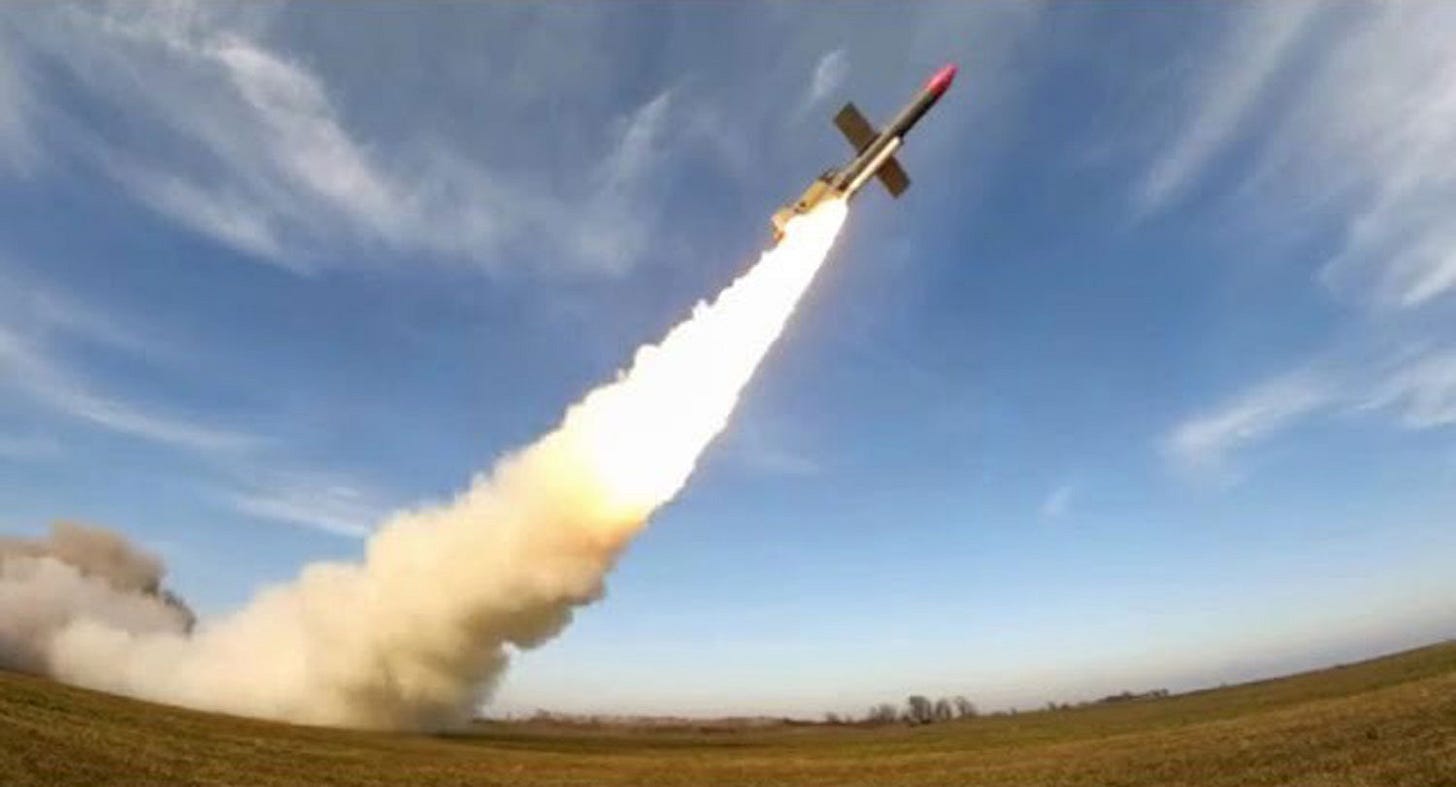To Make a Flamingo Missile, Pack in Old Bombs & Add a Tiny Engine
The Flamingo missile’s best features are under its skin
Ukraine’s new Flamingo cruise missile appears to include older, cheaper and easy-to-acquire components. Leftover Soviet-made free-fall bombs as warheads. And, for propulsion, a simple jet engine borrowed from a military training plane.
The inclusion of off-the-shelf components that are readily available from manufacturers in Ukraine or allied countries is good news as the Flamingo’s builder, Fire Point, aims to ramp up production to as many as seven missiles a day by next month.
There’s still a lot we don’t know about the Flamingo, including its cost. Fire Point is under official investigation in Kyiv for possibly inflating the missile’s capability and price.
Regardless of the outcome of that probe, photos and videos of the massive, seven-ton missile hint at a reliable and affordable design. A close look at the fiberglass missile’s nose seems to indicate the warhead is actually two warheads: a pair of repurposed gravity bombs packed end to end.
The Flamingo seems to be based on the FP-5 missile design from U.K. firm Milanion. The firm claims the FP-5 ranges 3,000 km with a 1,000-kg payload. There isn’t a 1,000-kg Soviet-style gravity bomb in widespread use, according to missile expert Fabian Hoffmann. So “the payload could consist of two stacked FAB-500 unguided bombs,” each weighing 500 kg, Hoffmann wrote.
The evidence points to the FAB-500 M62, one of the most ubiquitous Soviet-era unguided dumb bombs. The Soviet air force left behind potentially thousands of the bombs when it left Ukraine in 1991. Many munitions companies continue to build new FAB-500s, including Bulcomers KS in Bulgaria.


